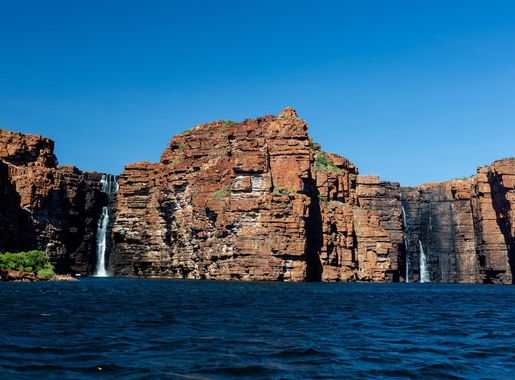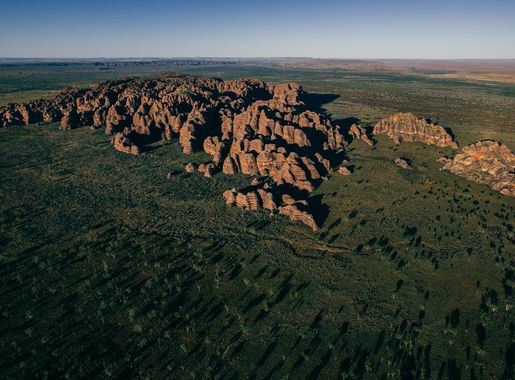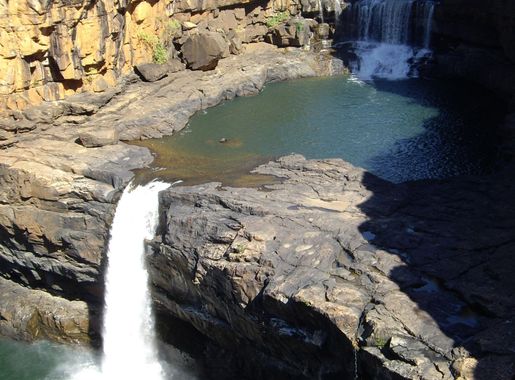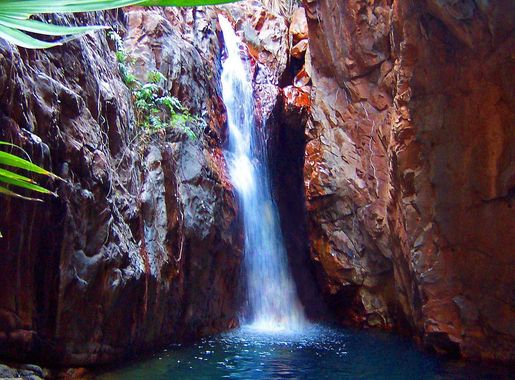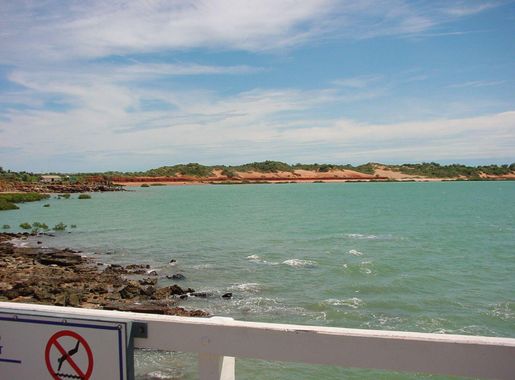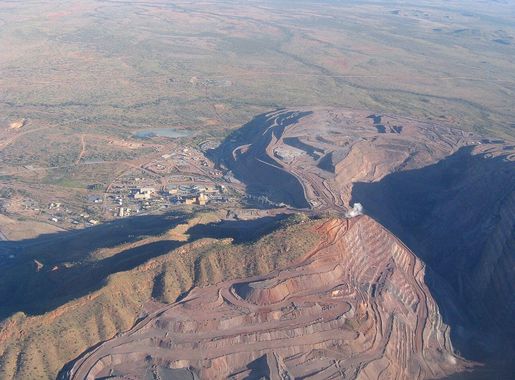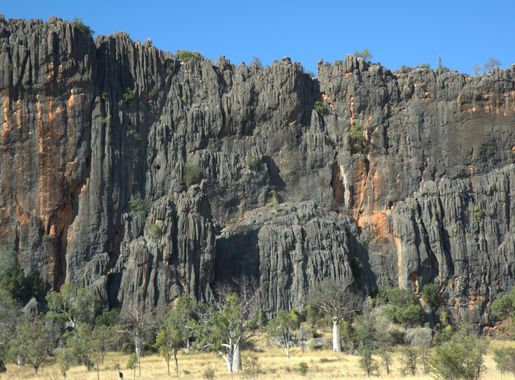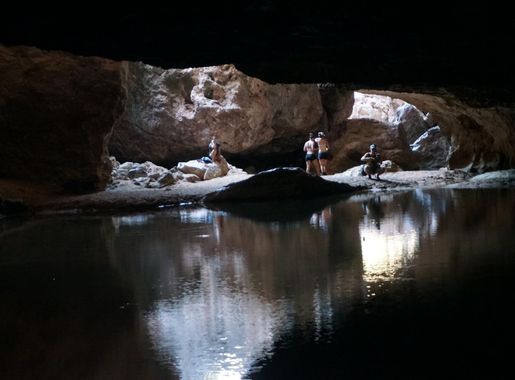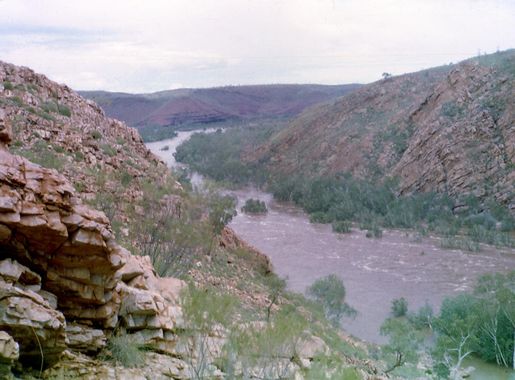
The Kimberley: Australia's Untamed Frontier
Discover the Kimberley: Explore Australia's vast wilderness, ancient rock art, and unique natural phenomena in this breathtaking northern region.
The Kimberley is a vast and rugged region in the northern part of Western Australia. Covering an area twice the size of Victoria, it offers an untouched wilderness with dramatic landscapes. From deep gorges and rocky cliffs to sprawling savannahs and pristine beaches, the Kimberley is a paradise for nature enthusiasts. The region is home to ancient rock art, some of which is over 40,000 years old. This makes it a significant cultural site for the Aboriginal communities who have lived here for millennia. Visiting these rock art sites offers a glimpse into the rich cultural heritage of the area. One of the highlights of the Kimberley is the stunning Horizontal Falls, where powerful tidal currents create a unique natural phenomenon. Adventure seekers can take boat tours to experience this spectacular sight up close. Other must-see attractions include the Bungle Bungle Range in Purnululu National Park, with its striking beehive-shaped rock formations, and the vast Lake Argyle, Australia's second-largest freshwater lake. The Kimberley is also known for its diverse wildlife, including saltwater crocodiles, wallabies, and a myriad of bird species. Whether you are exploring the rugged coastline or the inland wilderness, you are sure to encounter some of Australia's most iconic animals. Visiting the Kimberley requires careful planning due to its remote location and harsh climate. The best time to visit is during the dry season from May to October when the weather is more pleasant and the roads are accessible.
Local tips in The Kimberley
- Visit during the dry season (May to October) for the best weather and road conditions.
- Book tours and accommodation in advance as the region is remote and facilities are limited.
- Bring plenty of water, sun protection, and insect repellent for outdoor adventures.
- Respect the cultural significance of Aboriginal rock art sites and follow guidelines when visiting.
- Consider a 4WD vehicle for exploring the rugged terrain and off-road tracks.
The Kimberley: Australia's Untamed Frontier
The Kimberley is a vast and rugged region in the northern part of Western Australia. Covering an area twice the size of Victoria, it offers an untouched wilderness with dramatic landscapes. From deep gorges and rocky cliffs to sprawling savannahs and pristine beaches, the Kimberley is a paradise for nature enthusiasts. The region is home to ancient rock art, some of which is over 40,000 years old. This makes it a significant cultural site for the Aboriginal communities who have lived here for millennia. Visiting these rock art sites offers a glimpse into the rich cultural heritage of the area. One of the highlights of the Kimberley is the stunning Horizontal Falls, where powerful tidal currents create a unique natural phenomenon. Adventure seekers can take boat tours to experience this spectacular sight up close. Other must-see attractions include the Bungle Bungle Range in Purnululu National Park, with its striking beehive-shaped rock formations, and the vast Lake Argyle, Australia's second-largest freshwater lake. The Kimberley is also known for its diverse wildlife, including saltwater crocodiles, wallabies, and a myriad of bird species. Whether you are exploring the rugged coastline or the inland wilderness, you are sure to encounter some of Australia's most iconic animals. Visiting the Kimberley requires careful planning due to its remote location and harsh climate. The best time to visit is during the dry season from May to October when the weather is more pleasant and the roads are accessible.
When is the best time to go to The Kimberley?
Iconic landmarks you can’t miss
El Questro Emma Gorge Resort
Discover the breathtaking beauty and luxury of El Questro Emma Gorge Resort in the heart of the Kimberley region of Western Australia.

Ivanhoe Crossing
Discover the breathtaking views and rich wildlife at Ivanhoe Crossing, a stunning bridge in Kununurra, Western Australia - a must-visit for every traveler.
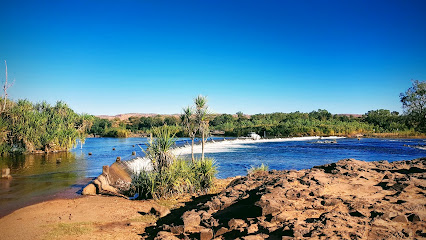
Kununurra Visitor Centre
Discover the East Kimberley from the Kununurra Visitor Centre, your gateway to unforgettable adventures and local insights in Western Australia.
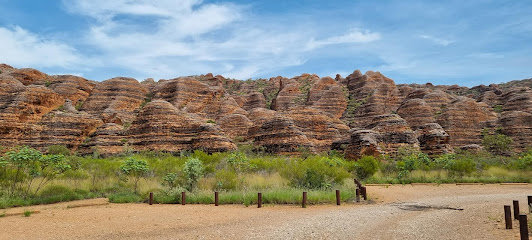
Purnululu National Park
Experience the breathtaking landscapes of Purnululu National Park, home to the iconic Bungle Bungles and rich biodiversity in Western Australia.
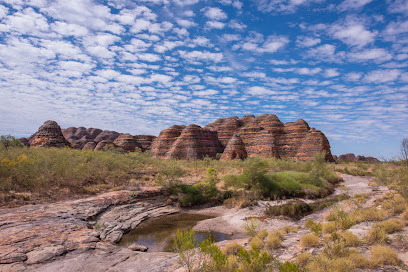
The Kimberley Grande Resort
Experience the perfect blend of luxury and nature at The Kimberley Grande Resort in Kununurra, your gateway to Western Australia's breathtaking landscapes.

Danggu Gorge National Park
Explore the breathtaking landscapes and rich biodiversity of Danggu Gorge National Park, a hidden gem in Western Australia perfect for outdoor adventures.
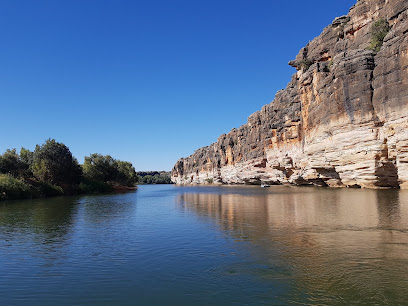
Bandilngan (Windjana Gorge) National Park
Explore the breathtaking landscapes and rich wildlife of Windjana Gorge National Park, a hidden gem in Western Australia, perfect for adventure seekers and nature lovers.
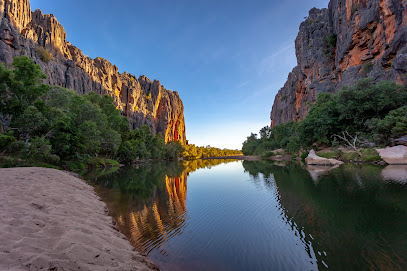
Kelly's Knob / Thegoowiyeng
Discover stunning panoramic views at Kelly's Knob in Kununurra – a must-visit scenic lookout for nature lovers and sunset seekers.
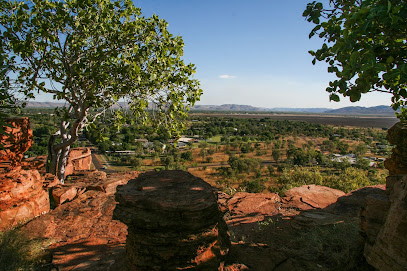
Home Valley Station
Explore the breathtaking landscapes and rich culture of Home Valley Station, a unique camping and hiking destination in the Australian outback.

Galjiba (Molly Spring)
Discover Galjiba (Molly Spring) in Lake Argyle, a breathtaking hiking area with stunning landscapes and diverse wildlife perfect for outdoor adventures.
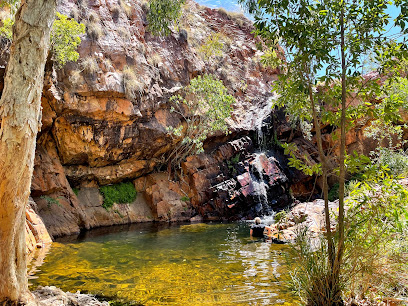
Freshwater East Kimberley Apartments | Kununurra Accommodation
Discover the perfect blend of comfort and adventure at Freshwater East Kimberley Apartments in Kununurra, where stunning landscapes and modern amenities await.
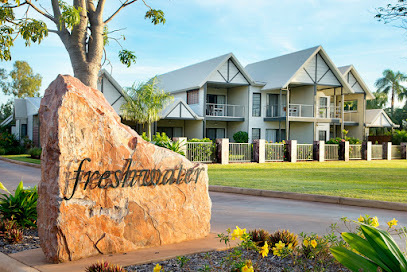
Dimalurru (Tunnel Creek) National Park
Explore Dimalurru National Park, a natural treasure in Western Australia featuring stunning geological formations and rich Aboriginal heritage.
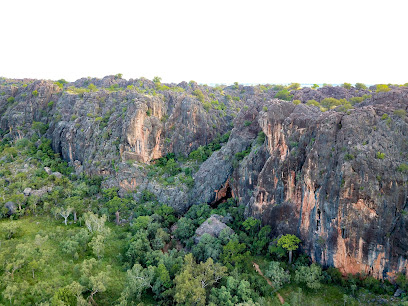
Celebrity Tree Park
Discover the enchanting Celebrity Tree Park in Kununurra, where nature meets art and adventure awaits for everyone.
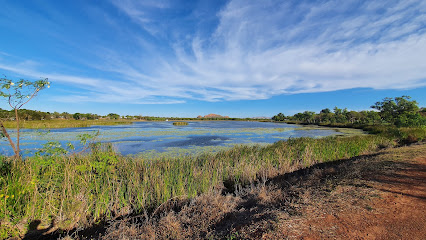
Ellenbrae Station
Discover the enchanting Ellenbrae Station on Gibb River Road, a serene camping ground offering stunning views and delicious homemade scones.

Emma Gorge
Explore the stunning beauty of Emma Gorge, a hidden gem in Western Australia’s Kimberley region, offering breathtaking landscapes and tranquil adventures.
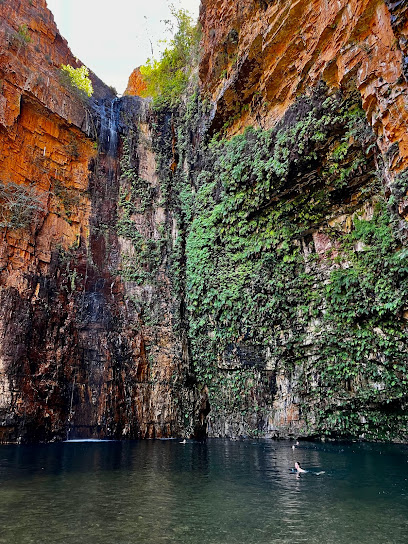
Unmissable attractions to see
Five Rivers Lookout
Experience stunning panoramic views of five rivers converging at Five Rivers Lookout in Wyndham, a must-visit destination in Western Australia.

Lake Argyle Dam Wall
Discover the breathtaking beauty and rich history of Lake Argyle Dam Wall, a must-see destination in Western Australia for every traveler.
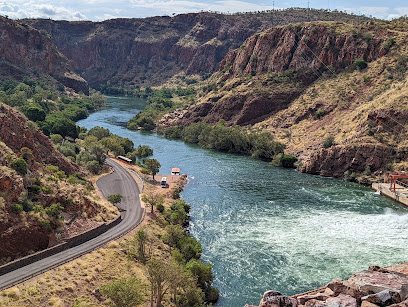
Celebrity Tree Park
Explore the stunning Celebrity Tree Park in Kununurra, where nature and culture intertwine amidst towering trees and breathtaking landscapes.

Emma Gorge
Explore the breathtaking landscapes of Emma Gorge in Durack, WA, a natural paradise for adventure seekers and nature lovers alike.

The Big Crocodile
Explore Wyndham's iconic Big Crocodile, a monumental tribute to local wildlife and a perfect photo opportunity in Western Australia.
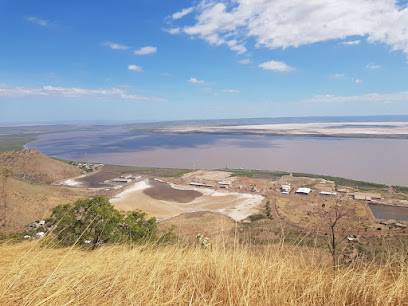
Black Rock Falls
Explore the breathtaking Black Rock Falls, a natural masterpiece in Lake Argyle, Western Australia, perfect for adventure and relaxation.
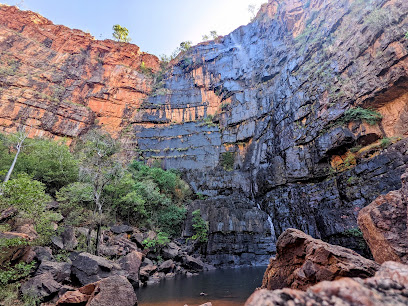
Swim Beach Park
Explore the natural beauty and tranquility of Swim Beach Park in Kununurra, a perfect spot for relaxation and outdoor fun in Western Australia.
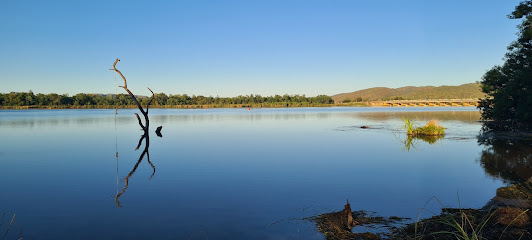
Kangaroo Haven
Discover Kangaroo Haven in Kununurra, a wildlife sanctuary dedicated to rescuing and rehabilitating Australia's native animals while offering unforgettable close encounters.
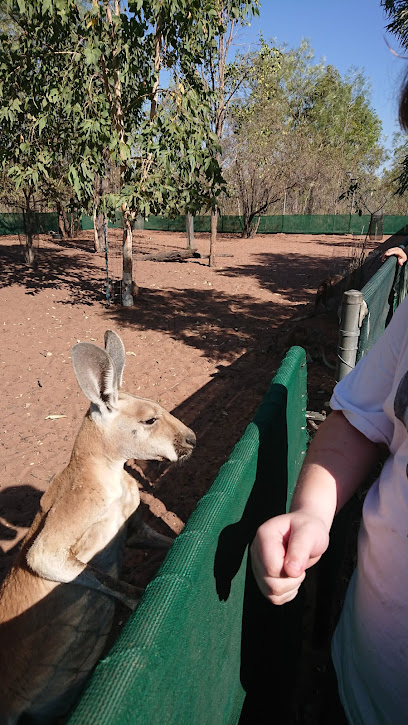
Pentecost River Crossing
Explore the breathtaking Pentecost River Crossing, a stunning landmark in Western Australia that combines natural beauty with rich cultural heritage.

Manning Gorge
Experience the breathtaking beauty of Manning Gorge, a hidden gem in Australia's Kimberley region, where nature and adventure await.

Mayiba (Middle springs)
Immerse yourself in the natural beauty and cultural heritage of Mayiba (Middle Springs) in Kununurra, Western Australia, a true gem for nature lovers.

Galvans Gorge
Explore the breathtaking beauty of Galvans Gorge in the King Leopold Ranges, an essential destination for nature lovers in Western Australia.
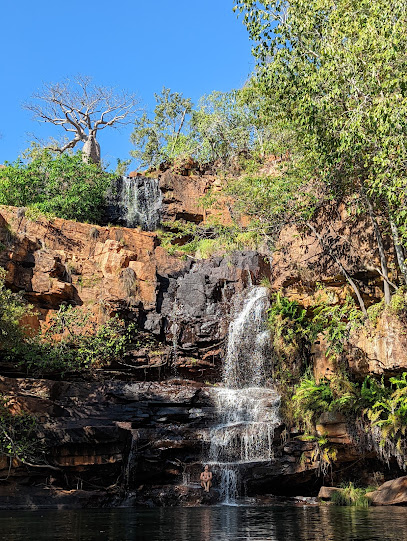
Cockburn Ranges Lookout
Experience the breathtaking views at Cockburn Ranges Lookout, a must-visit destination in Western Australia for nature lovers and photographers.

Kununurra Museum (run by the Kununurra Historical Society Inc)
Explore Kununurra Museum: A Cultural Journey Through Local History, Art, and Nature in Western Australia.
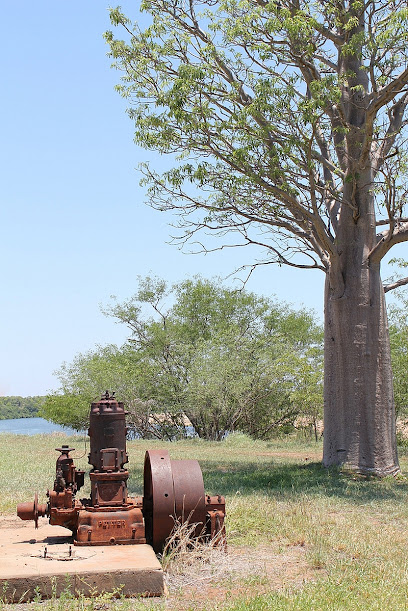
Mitchell River National Park
Discover Mitchell River National Park: Australia's untouched wilderness, rich in biodiversity and adventure, perfect for nature lovers and thrill-seekers.

Essential places to dine
Kimberleyland Waterfront Holiday Park | Kununurra WA
Discover tranquility at Kimberleyland Waterfront Holiday Park in Kununurra – your perfect escape into nature's beauty.
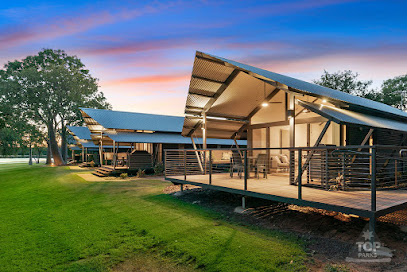
Hotel Kununurra
Discover comfort and hospitality at Hotel Kununurra - your gateway to exploring Western Australia's breathtaking landscapes.

El Questro Emma Gorge Resort
Discover luxury amidst nature at El Questro Emma Gorge Resort in Western Australia - where adventure meets tranquility in stunning landscapes.

PumpHouse Kununurra
Experience exquisite dining at PumpHouse Kununurra with breathtaking views and delightful local cuisine.
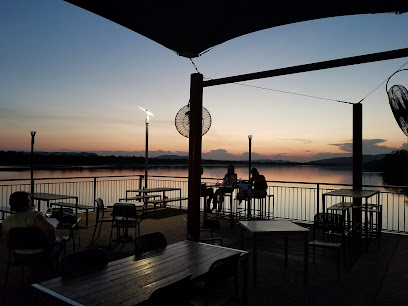
The Kimberley Grande Resort
Experience unparalleled luxury at The Kimberley Grande Resort - your gateway to adventure and relaxation in Kununurra.

Lily Lagoon Resort
Discover tranquility at Lily Lagoon Resort in Kununurra - a perfect blend of nature and luxury awaits you!

Wild Mango Cafe
Discover Wild Mango Cafe: A delightful culinary gem in Kununurra offering fresh breakfasts, lunch options, and exceptional coffee.
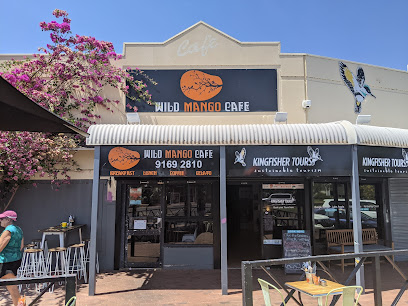
Kununurra Country Club Resort
Experience ultimate relaxation at Kununurra Country Club Resort—your gateway to Western Australia's stunning landscapes and adventures.
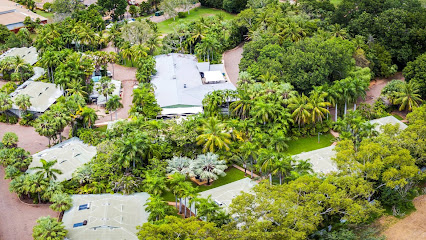
Kimberley Hotel
Discover comfort and local flavor at the Kimberley Hotel in Halls Creek, your gateway to Western Australia's stunning landscapes.

Gullivers Tavern
Experience the best of Kununurra at Gullivers Tavern - where hearty grill dishes meet an inviting atmosphere and exceptional service.
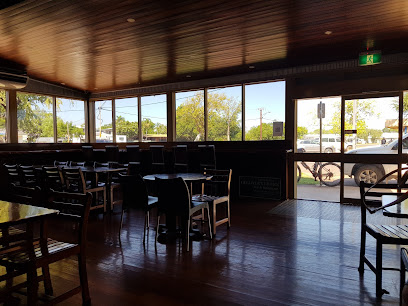
Freshwater East Kimberley Apartments | Kununurra Accommodation
Discover comfort amidst nature at Freshwater East Kimberley Apartments—your gateway to exploring Kununurra's stunning landscapes.

Ivanhoe Cafe
Experience delightful flavors and local charm at Ivanhoe Cafe in Kununurra - your perfect culinary pit stop!
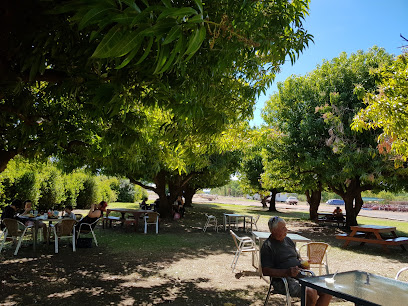
Gourmet Camp Oven Experience
Discover authentic Australian cuisine amidst breathtaking landscapes at Gourmet Camp Oven Experience in Kununurra.
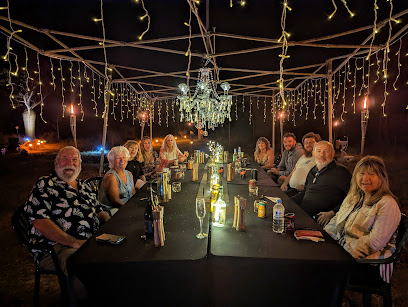
Hoochery Distillery
Experience the finest spirits at Hoochery Distillery - Australia's oldest rum distillery located in scenic Kununurra.
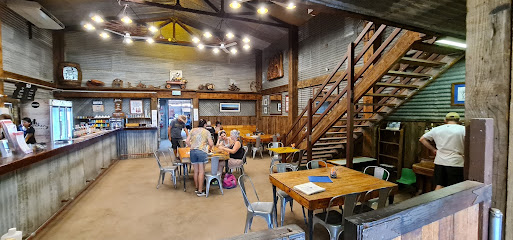
Kimbercrust Bakery & Top End Ice
Experience the best of Kununurra at Kimbercrust Bakery & Top End Ice with fresh pastries, delightful ice creams, and savory pizzas.
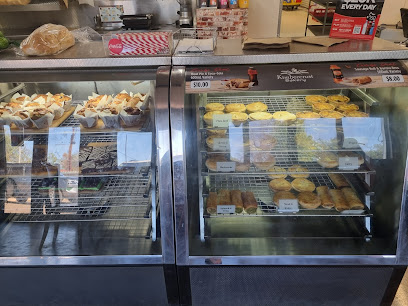
Markets, malls and hidden boutiques
The Hour Glass | Melbourne I Official Rolex and Patek Philippe Retailer
Explore The Hour Glass in Melbourne for an exceptional selection of luxury watches, including Rolex and Patek Philippe, in a sophisticated shopping environment.
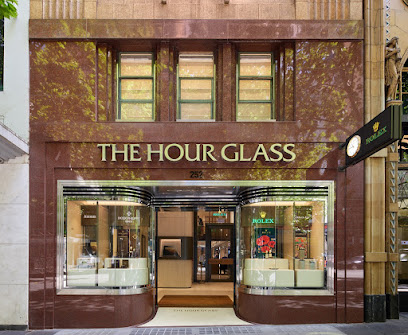
The Sandalwood Shop
Explore the enchanting Sandalwood Shop in Kununurra for unique gifts, health products, and exquisite perfumes infused with Australian sandalwood.
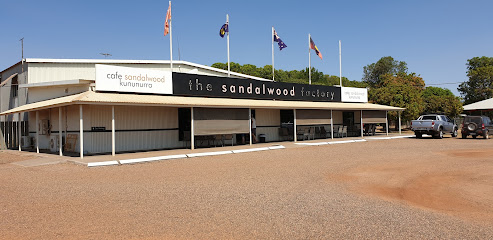
Unique Opal Mine - Australian Opal Jewelry Adelaide
Explore the Unique Opal Mine in Adelaide for stunning Australian opal jewelry and a glimpse into the art of opal crafting.
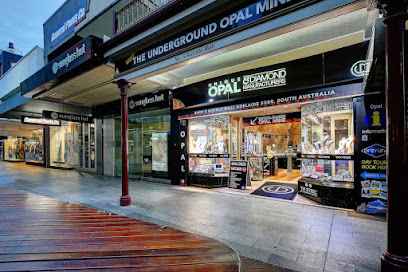
Searle's Autopro
Explore Kununurra with confidence by visiting Searle's Autopro for all your auto parts and accessory needs.
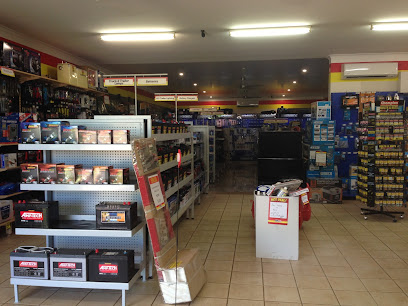
Great Annexe Co - Workshop, caravan Annexe makers, Online Shop
Unleash your travel potential at Great Annexe Co, Brendale's premier RV supply store for all your caravan needs.
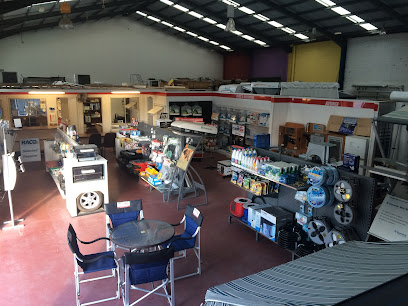
East Kimberley Mitre 10
Explore East Kimberley Mitre 10 in Kununurra for all your gardening and hardware needs, featuring local plants, tools, and expert advice.
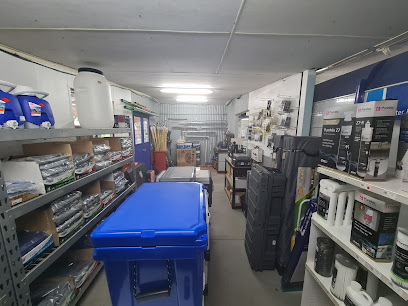
Kimberley Fine Diamonds
Explore the exquisite world of diamonds and fine jewelry at Kimberley Fine Diamonds in Kununurra, where elegance meets exceptional craftsmanship.
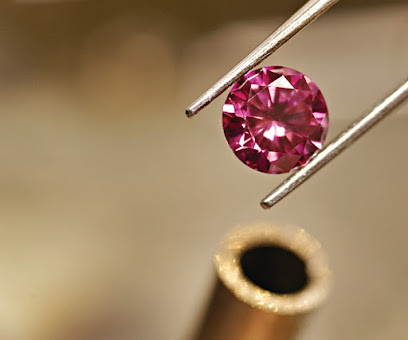
Revive
Revive: Explore Kununurra's beloved op shop, where unique finds and community spirit await every visitor.
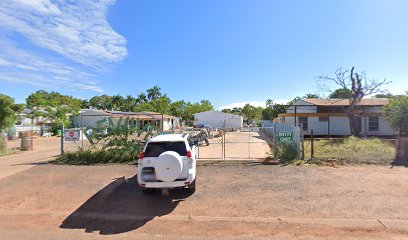
Gibb River Store
Explore the Gibb River Store, your essential stop for supplies and local culture on the stunning Gibb River Road in Western Australia.
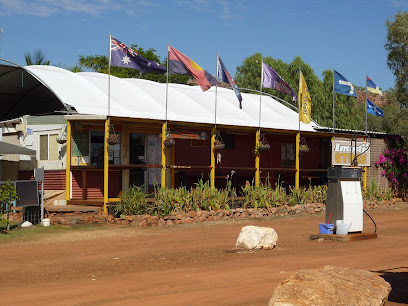
KAHM Co
Discover unique homewares, baby products, clothing, and gifts at KAHM Co, the charming store in New Lambton, New South Wales.
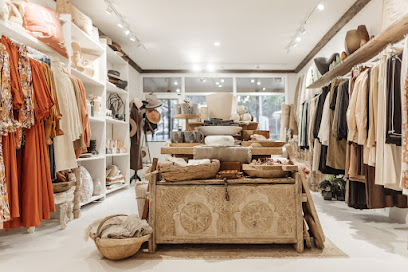
Walkabout Souvenirs
Explore the vibrant world of Walkabout Souvenirs, where unique Australian treasures and local craftsmanship meet in the heart of Kununurra.
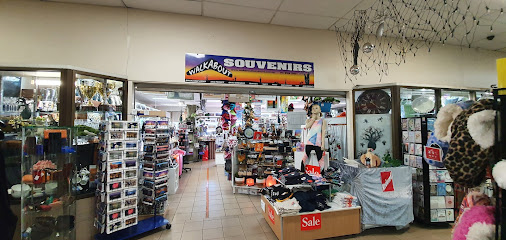
Penney's Prints - local photography and printing service. Boutique shopping in the Kimberley.
Immerse yourself in local art at Penney's Prints, where stunning photography meets unique boutique shopping in the heart of Kununurra.
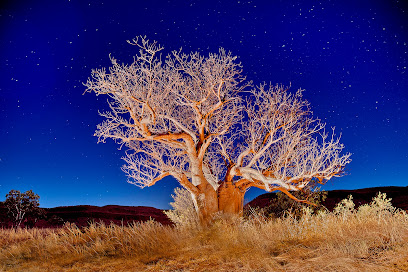
Shell Coles Express Fitzroy Crossing Roadhouse
Conveniently located along the Great Northern Highway, Shell Coles Express Fitzroy Crossing Roadhouse offers fuel, snacks, and essentials for every traveler in Western Australia.
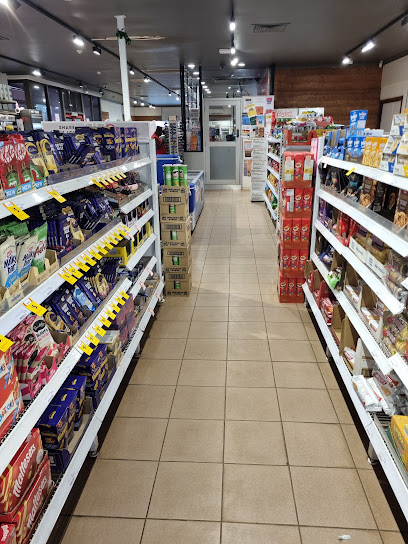
Wungkul Store
Discover the charm of Wungkul Store in Warmun, where local culture meets unique shopping experiences in Western Australia.
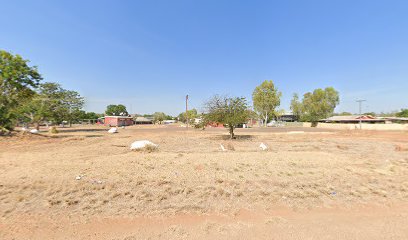
Grab A Bargain Variety Store
Explore unique finds and everyday essentials at Grab A Bargain Variety Store in Kununurra, Western Australia, a treasure trove for savvy shoppers.
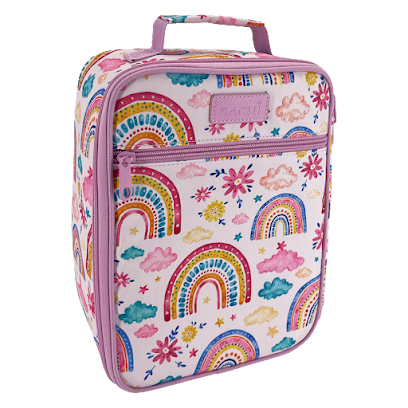
Essential bars & hidden hideouts
El Questro Emma Gorge Resort
Discover the natural beauty of Western Australia at El Questro Emma Gorge Resort, where luxury meets adventure in the heart of the Kimberley.

The Kimberley Grande Resort
Discover the perfect blend of luxury and nature at The Kimberley Grande Resort in Kununurra, Western Australia, a gateway to adventure and relaxation.

Wild Mango Cafe
Discover the perfect blend of local flavors and a welcoming atmosphere at Wild Mango Cafe in Kununurra, a must-visit for all tourists.
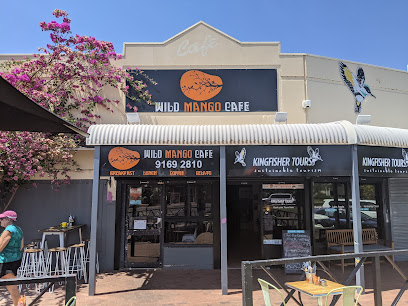
Kununurra Country Club Resort
Experience the beauty of the Kimberley at Kununurra Country Club Resort, your perfect blend of luxury and adventure in Western Australia.
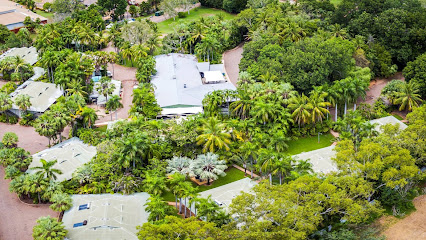
Kimberley Hotel
Discover the Kimberley Hotel, where comfort meets fun in Halls Creek, Western Australia—your perfect getaway for relaxation and entertainment.

Kelly's Knob / Thegoowiyeng
Explore Kelly's Knob in Kununurra for stunning views of the Ord River and surrounding landscapes, a perfect spot for nature lovers and adventurers.
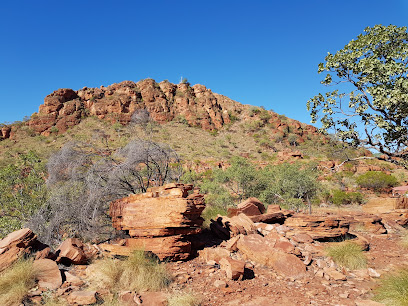
Kimberley Gardens Function Centre
Experience exquisite dining and unforgettable events at Kimberley Gardens Function Centre, a hidden gem in St Kilda East.
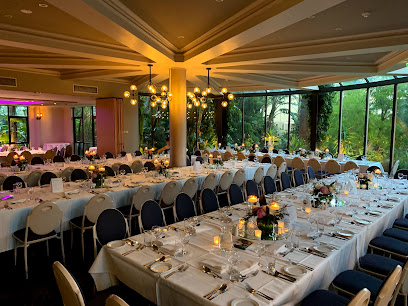
Home Valley Station
Discover the breathtaking beauty and rich cultural heritage of Home Valley Station, a perfect blend of adventure and relaxation in Western Australia.
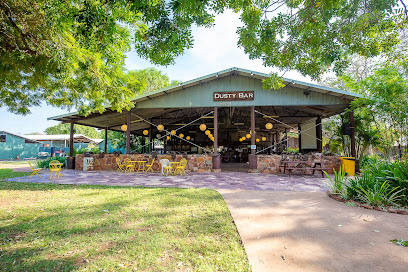
Kimberley Cafe
Experience the warmth and flavor of Kimberley Cafe, a delightful coffee haven nestled in Kununurra, Western Australia.

Gullivers Tavern
Experience the rich flavors of Kununurra at Gullivers Tavern, a vibrant grill and liquor destination offering delightful meals and a warm atmosphere.
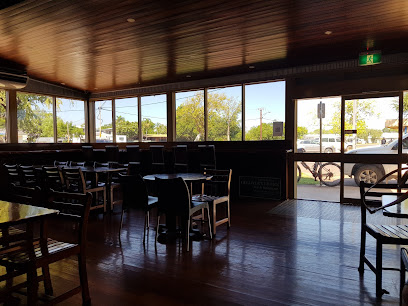
Freshwater East Kimberley Apartments | Kununurra Accommodation
Discover the stunning landscapes and vibrant culture of Kununurra while enjoying the comforts of Freshwater East Kimberley Apartments.

Gourmet Camp Oven Experience
Discover the authentic taste of Australia's Kimberley at the Gourmet Camp Oven Experience, where traditional flavors meet unforgettable dining.
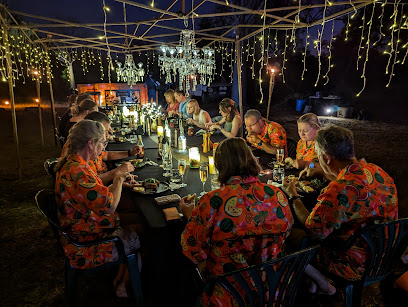
Hoochery Distillery
Discover the rich flavors of Kununurra at Hoochery Distillery, a premier destination for handcrafted spirits and local culinary delights.
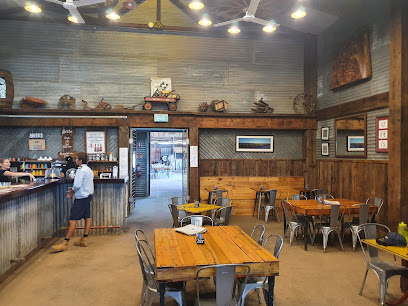
Kimbercrust Bakery & Top End Ice
Discover the flavors of Kununurra at Kimbercrust Bakery & Top End Ice, where fresh baked goods and delicious ice cream await.

Kelly's Bar & Grill
Discover the flavors of Kununurra at Kelly's Bar & Grill, where local ingredients meet exquisite dining in a beautiful setting.
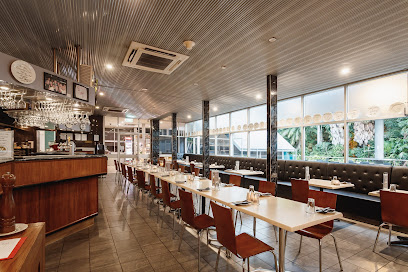
Local Phrases about The Kimberley
-
- HelloG'day
[G'day] - GoodbyeSee ya
[See ya] - YesYow
[Yow] - NoNah
[Nah] - Please/You're welcomeTa
[Ta] - Thank youCheers
[Cheers] - Excuse me/SorrySorry
[Sorry] - How are you?How ya goin'?
[How ya goin'?] - Fine. And you?Good. You?
[Good. You?] - Do you speak English?You speak English?
[You speak English?] - I don't understandI don't get ya
[I don't get ya]
- HelloG'day
-
- I'd like to see the menu, pleaseMenu, please
[Menu, please] - I don't eat meatNo meat
[No meat] - Cheers!Cheers!
[Cheers!] - I would like to pay, pleasePay, please
[Pay, please]
- I'd like to see the menu, pleaseMenu, please
-
- Help!Help!
[Help!] - Go away!Go away!
[Go away!] - Call the Police!Police!
[Police!] - Call a doctor!Doctor!
[Doctor!] - I'm lostLost
[Lost] - I'm illSick
[Sick]
- Help!Help!
-
- I'd like to buy...Buy...
[Buy...] - I'm just lookingJust looking
[Just looking] - How much is it?How much?
[How much?] - That's too expensiveToo expensive
[Too expensive] - Can you lower the price?Lower the price?
[Lower the price?]
- I'd like to buy...Buy...
-
- What time is it?What time?
[What time?] - It's one o'clockOne o'clock
[One o'clock] - Half past (10)Half ten
[Half ten] - MorningMornin'
[Mornin'] - AfternoonArvo
[Arvo] - EveningEvenin'
[Evenin'] - YesterdayYesty
[Yesty] - TodayToday
[Today] - TomorrowTomorra
[Tomorra] - 1One
[One] - 2Two
[Two] - 3Three
[Three] - 4Four
[Four] - 5Five
[Five] - 6Six
[Six] - 7Seven
[Seven] - 8Eight
[Eight] - 9Nine
[Nine] - 10Ten
[Ten]
- What time is it?What time?
-
- Where's a/the...?Where's...?
[Where's...?] - What's the address?Address?
[Address?] - Can you show me (on the map)?Show me (on map)?
[Show me (on map)?] - When's the next (bus)?Next (bus)?
[Next (bus)?] - A ticket (to ....)Ticket (to ....)
[Ticket (to ....)]
- Where's a/the...?Where's...?
History of The Kimberley
-
The Kimberley is home to some of the world’s oldest and most significant rock art. The Wandjina paintings, created by the Worrorra, Ngarinyin, and Wunumbal tribes, depict ancestral spirits and date back thousands of years. The Gwion Gwion (or Bradshaw) paintings are even older, possibly up to 60,000 years, showcasing intricate human figures and ceremonial scenes.
-
In the 18th century, Macassan traders from Sulawesi, Indonesia, began visiting the northern coast of Australia, including the Kimberley, to collect sea cucumbers. These interactions left a lasting impact on the Indigenous cultures, introducing new technologies, trade goods, and even intermarriage.
-
European exploration of the Kimberley began in the early 19th century with expeditions led by notable explorers such as Philip Parker King and George Grey. Settlement intensified in the late 19th century with the establishment of pastoral leases and the pearling industry, which brought a diverse influx of settlers, including Japanese, Malay, and Filipino workers.
-
The discovery of gold in Halls Creek in 1885 triggered a brief but intense gold rush, attracting thousands of prospectors to the region. Although the gold rush was short-lived, it significantly influenced the development of the Kimberley, leading to the establishment of towns and infrastructure.
-
During World War II, the Kimberley played a strategic role due to its remote location. In 1942, the town of Broome was attacked by Japanese aircraft, resulting in significant loss of life and damage to aircraft and infrastructure. This event is a poignant chapter in the region’s history.
-
The latter half of the 20th century saw a strong movement for Indigenous land rights in the Kimberley. The landmark Mabo decision in 1992 and subsequent Native Title claims have been instrumental in recognizing the traditional ownership of the land by Aboriginal communities, leading to significant cultural and legal changes in the region.
-
In recent decades, the Kimberley has emerged as a major tourist destination, celebrated for its breathtaking landscapes, rich cultural heritage, and unique biodiversity. Efforts to preserve both the natural environment and Indigenous cultures have become central to the region's identity, attracting visitors from around the globe.
The Kimberley Essentials
-
The Kimberley is located in the northern part of Western Australia. The main entry points are Broome and Kununurra, which have airports with flights from major Australian cities like Perth and Darwin. Alternatively, you can access the region via a road trip along the Great Northern Highway or the Gibb River Road, depending on your starting point and preferred route.
-
The Kimberley is vast, and public transportation options are limited. Renting a 4WD vehicle is highly recommended for exploring the rugged terrain and remote areas. There are also guided tours available that provide transportation and insight into the region's history and natural beauty. For those looking for a more luxurious experience, small charter flights can take you to some of the more isolated attractions.
-
The official currency is the Australian Dollar (AUD). Credit cards are widely accepted in Broome, Kununurra, and larger towns, but it's advisable to carry cash when visiting remote areas and smaller communities. ATMs are available in the main towns, but it’s a good idea to withdraw sufficient cash before heading into more remote parts of The Kimberley.
-
The Kimberley is generally safe, but it’s important to take standard precautions. Be cautious when swimming due to the presence of crocodiles and jellyfish in certain areas. Avoid isolated areas at night and always inform someone of your travel plans. There are no specific high-crime areas targeting tourists, but it’s always best to stay vigilant and aware of your surroundings.
-
In case of emergency, dial 000 for immediate assistance. Medical facilities are available in Broome and Kununurra, with smaller clinics in other towns. It is highly recommended to have travel insurance that covers medical emergencies and evacuations. For minor health issues, there are pharmacies in the main towns where you can purchase over-the-counter medications.
-
Fashion: Do wear lightweight, breathable clothing and sturdy footwear for exploring. Don’t forget a hat and sunscreen. Religion: Do respect Indigenous cultures and traditions. Always ask for permission before taking photos of Indigenous people or cultural sites. Public Transport: Do plan your trips in advance as public transport is limited. Greetings: Do greet locals with a friendly smile or a handshake. Eating & Drinking: Do try local delicacies and support local businesses. Don’t litter; always dispose of your trash properly.
-
To experience The Kimberley like a local, visit the local markets in Broome and Kununurra where you can buy fresh produce and artisanal goods. Engage with the locals, many of whom have fascinating stories about the region's history and culture. Don’t miss the opportunity to watch a sunset at Cable Beach in Broome or explore the stunning gorges in El Questro Wilderness Park. For a unique experience, take a scenic flight over the Bungle Bungles or a cruise along the Ord River.
Trending Landmarks in The Kimberley
-
El Questro Emma Gorge Resort
-
Ivanhoe Crossing
-
Kununurra Visitor Centre
-
Purnululu National Park
-
The Kimberley Grande Resort
-
Danggu Gorge National Park
-
Bandilngan (Windjana Gorge) National Park
-
Kelly's Knob / Thegoowiyeng
-
Home Valley Station
-
Galjiba (Molly Spring)
-
Freshwater East Kimberley Apartments | Kununurra Accommodation
-
Dimalurru (Tunnel Creek) National Park
-
Celebrity Tree Park
-
Ellenbrae Station
-
Emma Gorge
Nearby Cities to The Kimberley
-
Things To Do in Suai
-
Things To Do in Bobonaro
-
Things To Do in Same
-
Things To Do in Ermera
-
Things To Do in Aileu
-
Things To Do in Gleno
-
Things To Do in Dili
-
Things To Do in Lospalos
-
Things To Do in Baucau
-
Things To Do in Alice Springs
-
Things To Do in Makassar
-
Things To Do in Bali
-
Things To Do in Surabaya
-
Things To Do in Yogyakarta
-
Things To Do in Semarang

